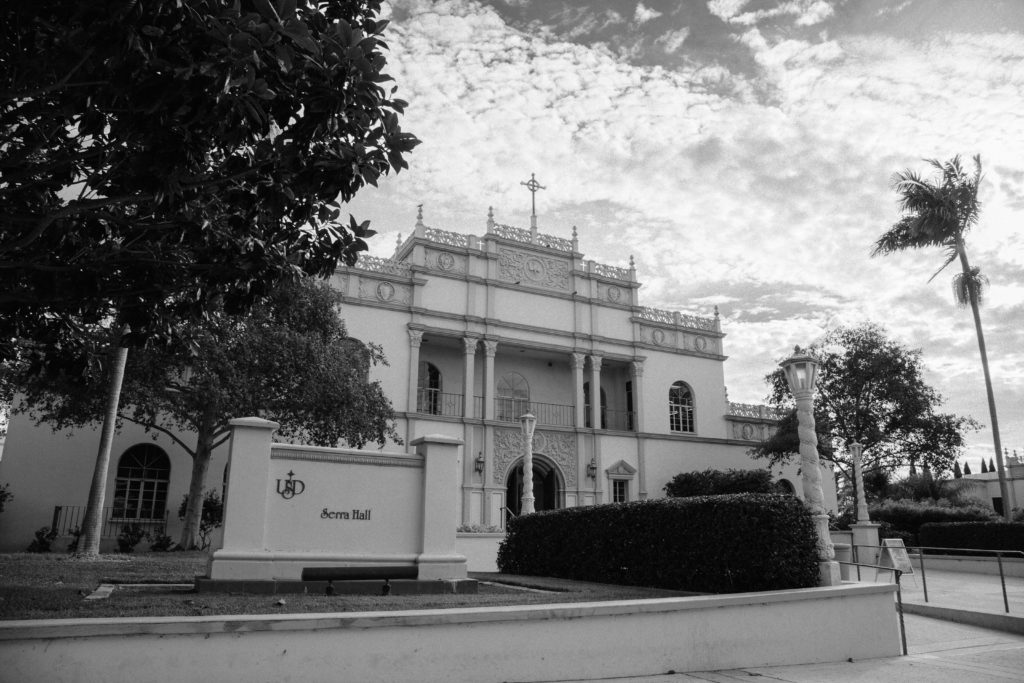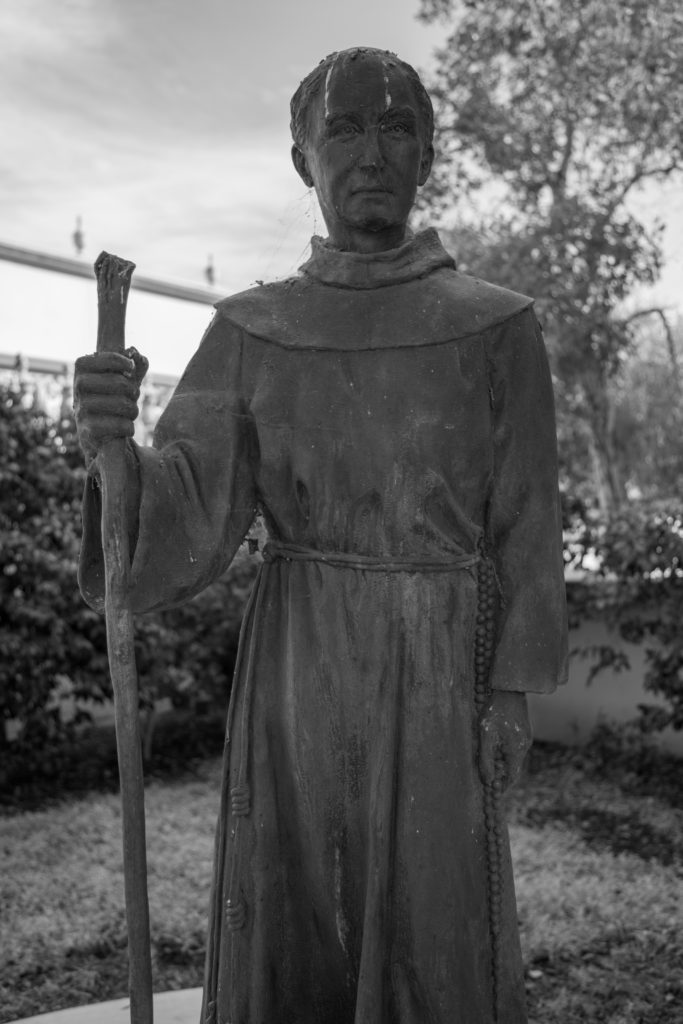Serra name change proposed

Members of AIISO and other organizations are attempting to change the name of Serra Hall in hopes to be more inclusive. Walker Chuppe/The USD Vista
American Indian & Indigenous Student Organization lead the charge to change the name of Serra Hall
Celina Tebor | Feature Editor | USD Vista
Hundreds of Toreros pass Serra Hall daily, the home of classes, computer labs, and offices at the University of San Diego. However, most students may not know the history of the man whom the hall is named after. In pursuit of making USD a more inclusive place, the American Indian & Indigenous Student Organization (AIISO) has been pushing for the name of Serra Hall to be changed.
The 2015 canonization of Saint Junípero Serra by Pope Francis was a controversial decision. Serra was the head of the missionaries who came from Spain to America in the 18th century. Sophomore Alexii Sigona, who originally brought forth the idea of changing the name of Serra Hall, explained why Serra is such a controversial figure.
“It was an ethnocide and there was a lot of terrible things that happened during the missions,” Sigona said. “There was a lot of culture and teachings that were lost and our tribe is still trying to recover all the knowledge that was lost, and that was because of the missions. Forty percent of the natives died during the missions.”
Junior and President of AIISO, Patrick Murphy, recognized why USD honored Serra by naming a hall after him, but Murphy still supports the changing of the building’s name.
“I can see it as two ways,” Murphy said. “It is a private Catholic school, so they are honoring Serra and his contribution to the religion. It does create an uneasiness for those who know the history.”
Sigona, a member of the Amah Mutsun Tribal Band, said he feels affected by the name of Serra Hall.
“It makes me feel uncomfortable,” Sigona said. “Every time I see Serra Hall, it reminds me of what happened to my ancestors, and it kind of triggers an effect of ‘Serra did this, which influenced this,’ which basically led to me not knowing a side of my heritage.”
While some indigenous students may feel uncomfortable with the name of Serra Hall, other USD students do not know the history surrounding the saint.
Sigona explained why students may not know of Serra’s history.
“He was just canonized a few years ago, and so most people just think ‘Oh, it’s St. Serra, he’s a saint,’ and associate that with him being a great person,” Sigona said.
Sigona knows that changing the name of a building is not an easy feat, and believes the first step of changing Serra Hall’s name is to inform more students.
“Once students learn what he did, which was horrendous, they’ll want change,” Sigona said. “And when you have students who want change, then change will happen.”
In order to educate more students about the history of Serra, AIISO will host an event in front of Serra Hall on Thursday, Nov. 16 from 12:30 – 2 p.m. Murphy explained the effect the event should have.

AIISO will be holding an informational today in front of Serra Hall with flyers and other attractions in hopes of teaching students the history of St. Serra. Walker Chuppe/The USD Vista
“It’s an informational,” Murphy said. “We’re trying to bring light to the actual history for some of the students who may not know everything about Serra.”
Murphy explained what the club will do to catch the attention of students passing by Serra Hall during the event.
“We collected 300 rocks and we’re going to spray paint them bright red,” Murphy said. “We’re going to place them in the grass area, around the statue, to catch people’s attention.”
Sigona explained what the red rocks symbolize.
“Each rock is going to symbolize 1,000 native deaths, and we’re going to lay out the rocks in front of the statue,” Sigona said.
AIISO is also going to have more tangible information about St. Serra’s history at the event, according to Murphy.
“We’re going to have tables around the side with informational flyers,” Murphy said. “And we’re going to have traditional bird singers there. It’ll help us out with the event, and it’ll be respectful towards our traditions and [we hope] that people would get stopped by the bird singing.”
The event will have tribal nation flags to represent the different tribes in California. Murphy believed they will pay respect to the tribes.
“[The flags] show that although there was this genocide and almost extinction of the culture, we’re still here today and prominent people,” Murphy said.
Junior Davis Luanava, who is part of AIISO, has more plans, beyond the informational, to teach about the history of Serra in hopes of changing its name.
“We’re going to create an Instagram and a Facebook to get the word out,” Luanava said. “We have some informational papers that we’re planning on putting around campus, just to get people thinking about Serra. And we’re going to partner with the Office of Sustainability, possibly, and go to their events to talk about Serra as well. I’ve started talking to a bunch of the classes for ethnic studies and theology about this topic, [a topic] that even the professors don’t know about.”
Luanava believes that it’s important to get the word out to as many people as possible.
“Once we’ve started to educate [professors], they have started to educate their own classes,” Luanava said. “We’re going to try to go at this at every angle, because this is a very important topic.”
According to Murphy, AIISO has proposed several names to replace Serra Hall.
“We have a couple suggestions,” Murphy said. “Kumeyaay Hall, which would give respect to indigenous people in the San Diego area, and another suggestion was St. Kateri, which would help on both levels: on the religious side, she was a saint, and she was [also] Native American, so it would pay both parties.”
AIISO’s goal is to inform the USD community about the history of Serra in hopes of someday changing its name. If Serra Hall does become a name of the past, the building will likely host a new name honoring the indigenous community.